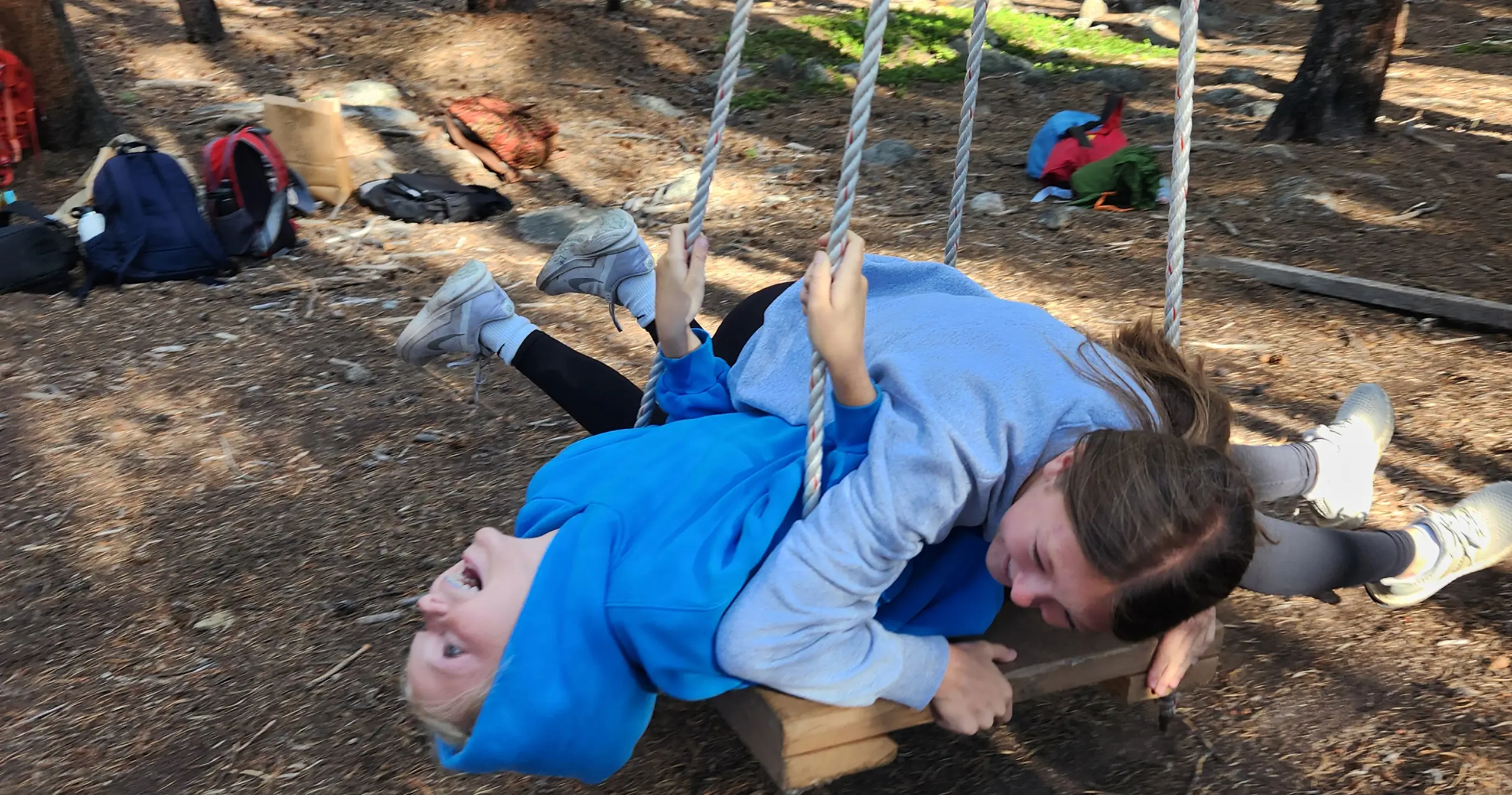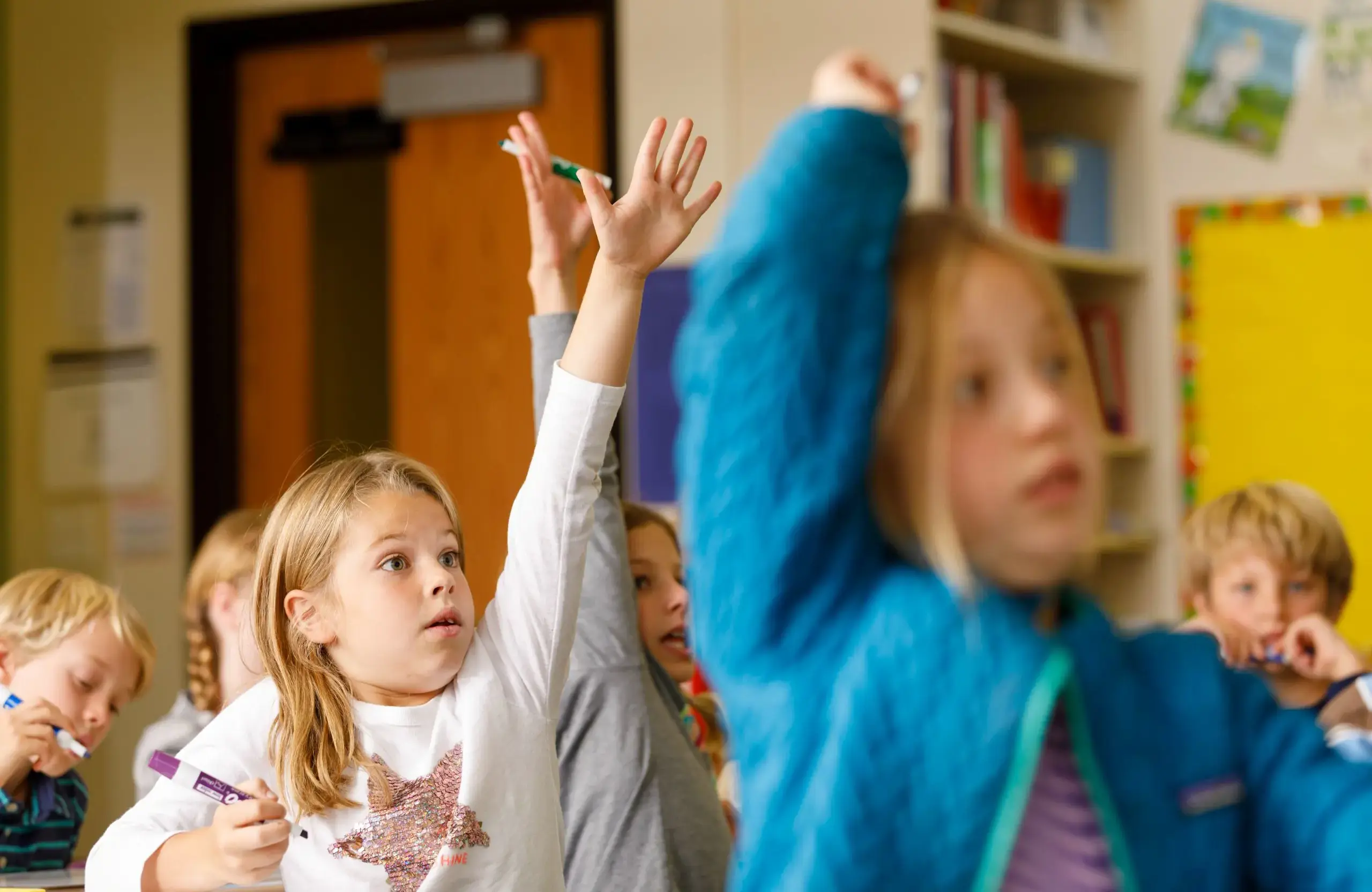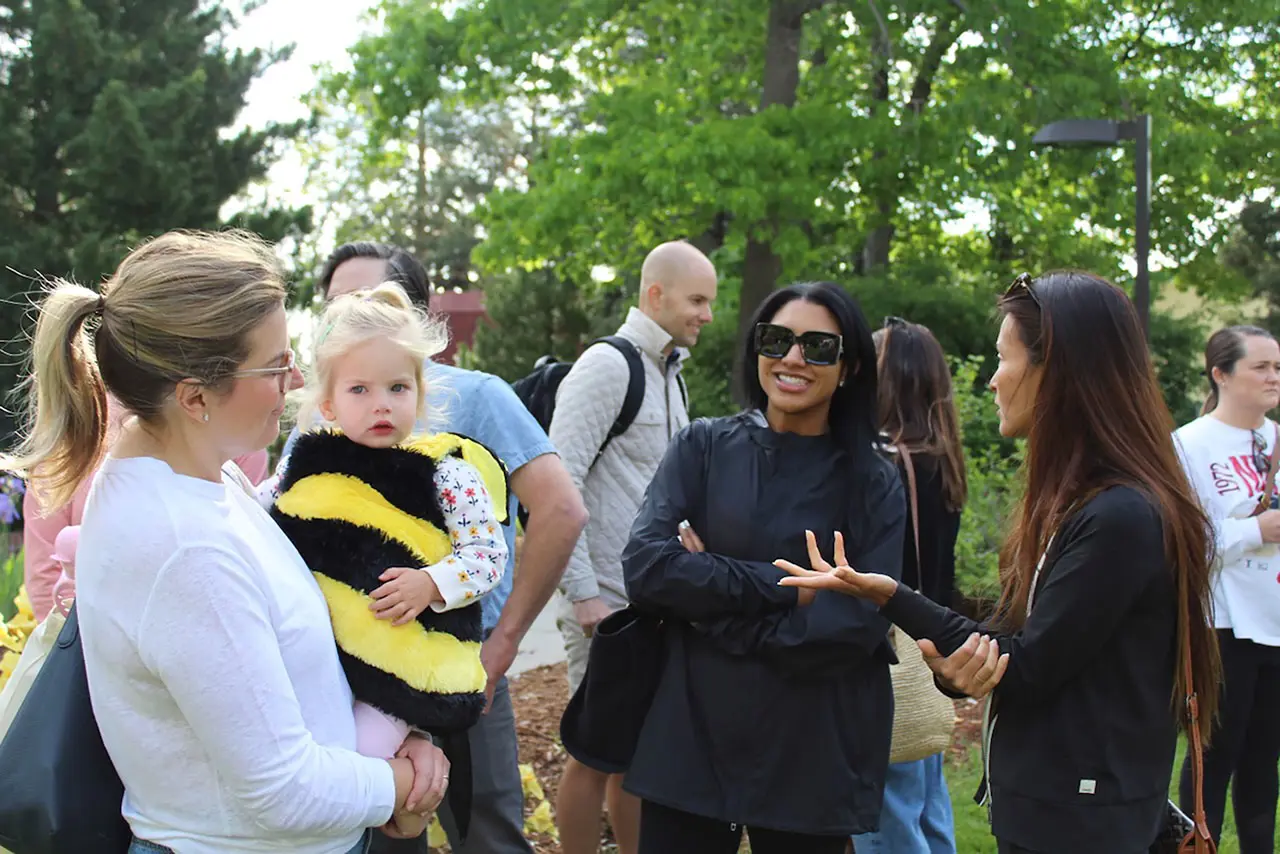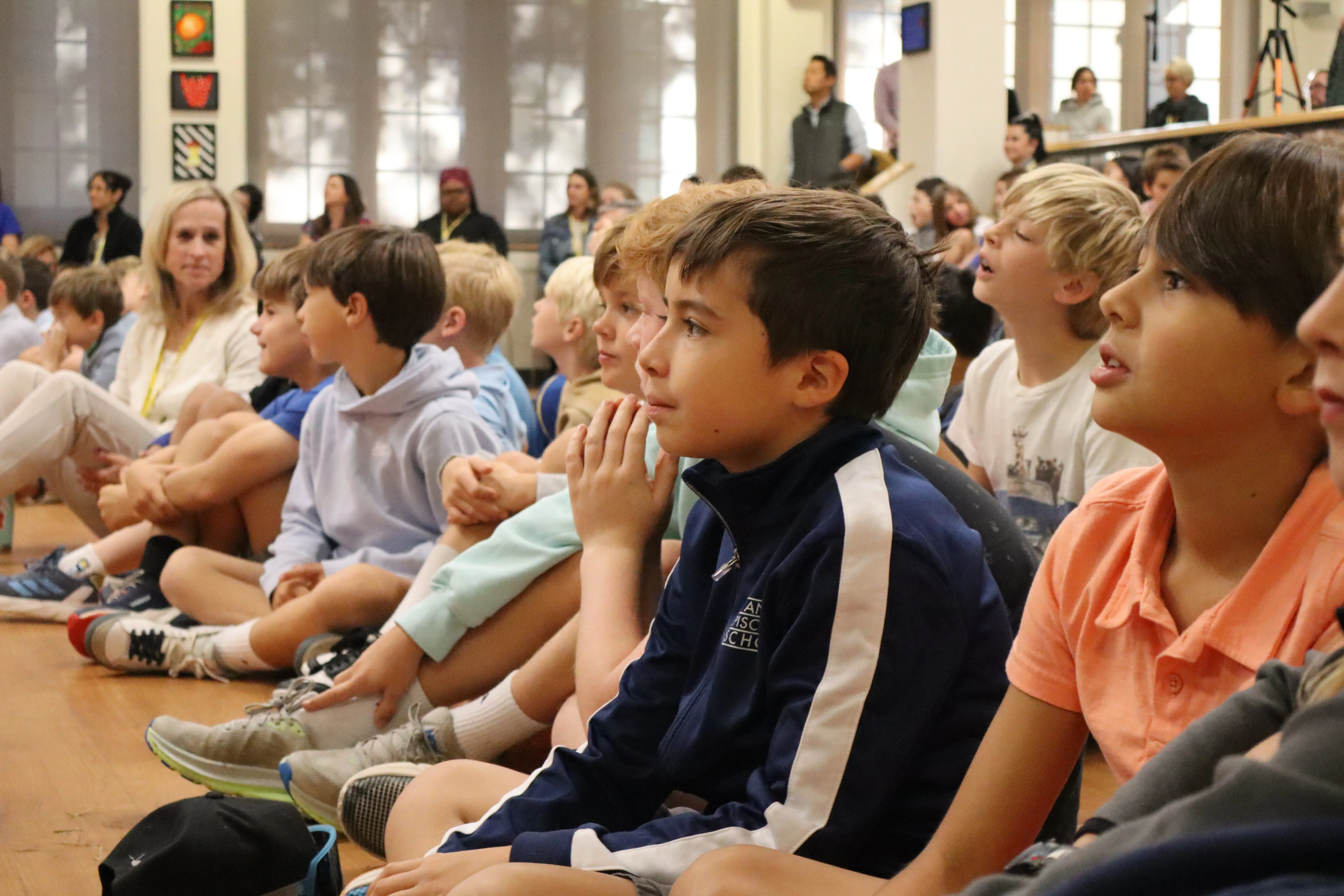First Grade Overview
First grade is a pivotal stage in a child's academic journey, focusing on foundational skills in literacy, numeracy, and critical thinking. Students engage in:
- Developing reading and math fluency
- Exploring science and social studies
- Participating in enriching subjects such as technology, Spanish, art, physical education, religion, outdoor education, and music
Our supportive community fosters social-emotional growth, emphasizing kindness and empathy. The first-grade program creates a nurturing environment where every child can thrive academically and emotionally, building a strong foundation for future success.
| Writing |
|---|
|
In first grade, writing focuses on introducing students to the writing process. Throughout the year, first-graders expand on concepts learned in kindergarten, such as generating ideas, writing, applying phonics concepts, and editing for punctuation and conventions (capitalization and spacing between words). Students should be able to master these skills by the end of the year. Students learn how to use detail and feeling words to write stories. They also learn how to recount sequenced events using transition words and how to provide a sense of closure. |
| Grammar |
| First-grade students are focusing on writing complete and descriptive sentences with the correct use of capital letters at the beginning of each sentence. They may also explore the additional use of adjectives and adverbs to add information to their work. |
| Word Study |
|
In first grade, students learn how to master reading words with complex consonant constructions in closed syllables, open syllables, vowel-consonant-e syllables, vowel team syllables, and inflectional endings. They learn how to apply functional strategies to successfully read multisyllabic words with ease. The first-grade word study program targets the skills that students need to build confidence with decoding skills in order to become accurate, fluent readers. First Grade uses Really Great Reading’s Blast program for word study. These daily lessons include explicit instruction and progress monitoring of letter-sound correspondences, phonemic and phonological awareness, high-frequency word fluency, phonics knowledge, and spelling. The lessons are designed to teach these essential skills, which promote strong decoding and fluent, accurate reading. Intervention lessons are supplemented with Heggerty’s Phonemic Awareness Primary Curriculum. These daily lessons include rhyme, phoneme isolation, blending, segmenting, and manipulation. Students also have opportunities to build alphabet knowledge, language awareness, and phoneme-grapheme connections. |
| Reading |
| In first-grade reading, phonics, vocabulary, fluency, and comprehension skills are taught in whole-group instruction. Students also learn in small reading groups, where they are grouped by reading level and needs. Depending on the group’s needs, the students work on decoding, fluency, and reading comprehension. Students read fiction, nonfiction, and informational articles. Students also listen to read-alouds throughout the year to develop their listening comprehension. |
| Math |
| The main focus of first-grade math is addition and subtraction. Starting at the beginning of the year, students learn to recognize number patterns by counting to 100, and then they understand place value to solidify their knowledge of number value. Beginning with addition facts and strategies within 20, students are given two Standards, one based on skill and one on metacognition. Subtraction is reinforced within 20 to lay the foundation and groundwork for higher-level subtraction. Ultimately, the goal for first graders is to add and subtract within 100. Real-world applications enable students to concretely see math in the world around them. Additional areas of study include telling time, money, shapes, solids, and data. |
| Science |
|
First-grade science includes hands-on activities that help students explore the world and understand the processes shaping it. Key areas of focus include:
Demonstrating proficiency in:
Students apply these skills to understand core scientific concepts and build a foundation for future learning. |
| Social Studies |
|
The elementary social studies program begins with individuals and families, expanding to include neighborhoods, communities, and global cultures. Students explore:
In economics, students learn to differentiate between needs and wants, and explore how economic diversity impacts the classroom community. Students will also engage in a service learning project within and outside of St. Anne’s to better understand their roles as community members and ways to help others. |
| Music |
|
The first-grade music curriculum is designed to develop and strengthen each child’s ability to sing, dance, and play rhythm instruments with their classmates. Skills taught during music class include reading rhythms, matching pitch vocally, moving and responding to music, and an introduction to music terms and vocabulary. |
| Art |
|
In first-grade art, young artists primarily create through drawing, painting, and creating different types of 3-D sculpture. They learn about various artists and their styles and try to implement different pieces of those styles throughout their own work. Another important attribute to a growing artist is practice of the proper use of tools and strategies to create different effects in their artwork. Most importantly, the young artists are encouraged to experiment with different processes and try new things to explore their creativity and voice through art. This may include showing feelings or an idea through color or lines. Working in a more representational or realistic way vs. abstract are all things artists learn, practice, and create during their time in class. |
| Spanish |
| The first-grade Spanish program engages students in play-based and exploratory activities that promote language acquisition through music, movement, stories, games, and art with increased opportunities for self-directed efforts and demonstration of learning. |
| PE |
|
The goal of St. Anne’s physical education program is to provide developmentally appropriate movement experiences that focus on learning to move and learning through movement. Basic skills form the foundation for a more active and healthy life. In Developmental Level One (kindergarten through second grade), students participate in a daily, comprehensive program that includes:
This program encourages physical development and lays the groundwork for lifelong fitness. |
| Innovations |
| In first grade, students embark on their journey into the world of innovation. Here, the integration of the Engineering Design Process (EDP), computer fundamentals, and digital citizenship establishes a holistic approach to technology education. Students engage in simple engineering design activities and use basic technology skills to explore and learn in engaging ways. Simultaneously, the introduction to digital citizenship concepts ensures that the use of technology is guided by establishing ethical principles and responsible online behavior. |
| Library |
| The first-grade library curriculum promotes students’ critical thinking, effective and ethical use of information, and fostering a lifelong love of reading and learning. The librarian collaborates with teachers to align library activities with classroom units of study and to support student learning across subjects. |
| Religion |
|
First grade religious education begins with an introduction to the Bible as a special book that reveals God the Creator and God incarnate in Jesus. The program then explores stories from the Hebrew Bible, focusing on key figures like Abraham, Sarah, and Moses. Students also learn about Jesus' birth, baptism, and begin studying His miracles and parables, reflecting on the lessons God wants to teach us and the reactions of the people. Students engage with these stories through readings, discussions, videos, acting, and drawing, helping them connect to larger concepts and make thoughtful choices. Additionally, students are introduced to four world religions—Judaism, Islam, Buddhism, and Hinduism—along with small lessons on Indigenous spirituality. |
| Outdoor Education |
|
First-grade students continue their trips to St. Anne’s in the Hills (SAITH), participating in fall, winter, and spring trips. These experiences expand their understanding of the environment, focusing on how and why people interact with it in different ways. Key learning areas include:
All outdoor education activities are grounded in the school’s core value of compassion. |









